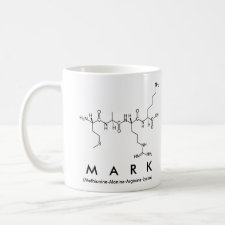
Authors: Salian VD, Byrne ME
Article Title: Controlled Drug Release from Weakly Crosslinked Molecularly Imprinted Networks: The Benefit of Living Radical Polymerization.
Publication date: 2013
Journal: Macromolecular Chemistry And Physics
Volume: 214
Issue: (20)
Page numbers: 2355-2366.
DOI: 10.1002/macp.201300386
Abstract: This work focuses on the complex relationship between molecularly imprinted polymer network formation, network structure, and composition, and template binding and transport. A comprehensive study of template binding and transport is performed using two different reaction schemes (living radical polymerization and conventional free radical polymerization) while altering template concentration, functional monomer concentration, solvent content, crosslinking monomer length, and extent of crosslinking. Imprinted poly(HEMA-co-DEAEM-co-PEG200DMA) networks prepared by living radical polymerization (LRP) exhibit enhanced molecular imprinting and have significantly higher template binding affinities (»2x), higher binding capacities (»2.3x), slower template release, and lower template diffusion coefficients (1/2x) compared with imprinted polymers prepared via free radical polymerization (FRP) with statistically similar parameters for non-imprinted polymers. A synergistic effect between LRP and molecular imprinting is demonstrated. LRP has a profound structural effect on the network leading to reduced free volume and/or increased homogeneity in the mesh structure leading to enhanced macromolecular memory. In addition, by altering reaction parameters, like template and monomer concentrations, the template binding and release characteristics can be tuned. By using an LRP reaction scheme, improved control over release can be achieved enhancing the role the molecular imprinting technique can make in the design and engineering of novel drug delivery materials
Template and target information: diclofenac sodium, DS
Author keywords: controlled drug delivery, Controlled polymerization, enhanced drug loading and release, living radical polymerization, molecular imprinting



Join the Society for Molecular Imprinting

New items RSS feed
Sign-up for e-mail updates:
Choose between receiving an occasional newsletter or more frequent e-mail alerts.
Click here to go to the sign-up page.
Is your name elemental or peptidic? Enter your name and find out by clicking either of the buttons below!
Other products you may like:
 MIPdatabase
MIPdatabase









